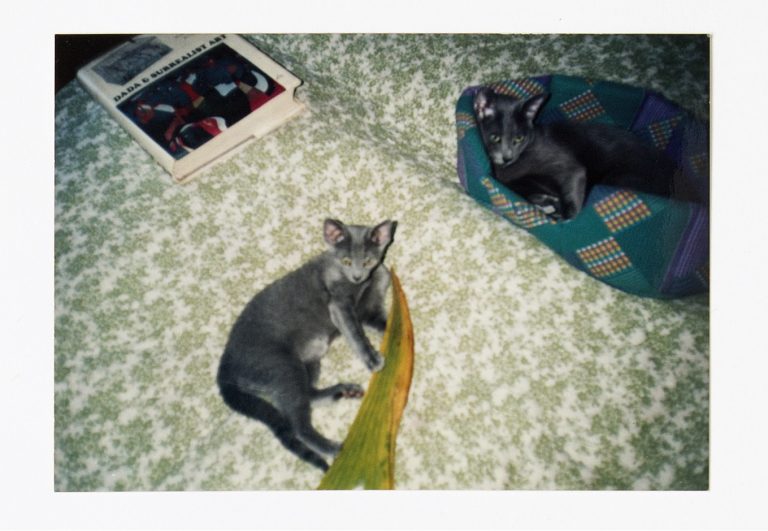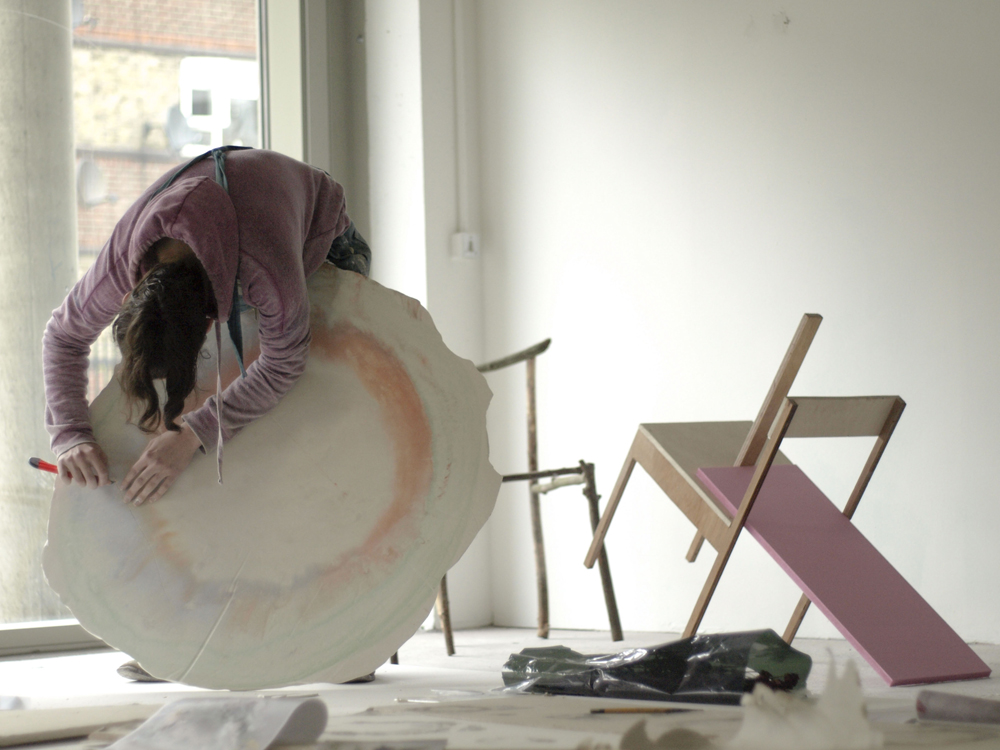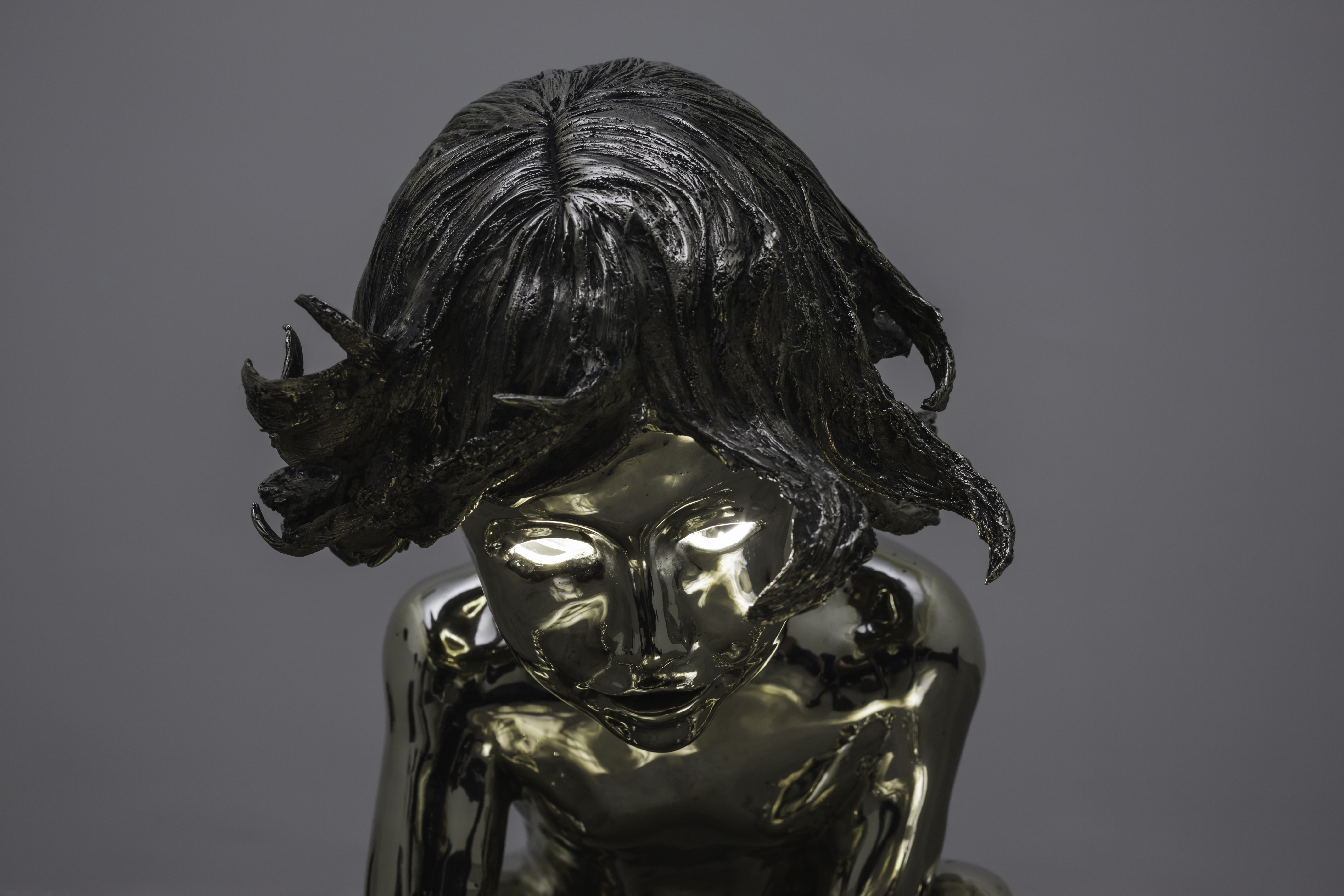In 1892, Sir Patrick Geddes opened what must be among the first museums of urban planning in the world, in an observatory housing a camera obscura on the Royal Mile, next to Edinburgh Castle. The museum – now called the Camera Obscura and World of Illusions – is still in operation, though visitors could be forgiven for thinking it an eccentric curiosity, and in fact from the outset Geddes’s museum had something of the amateur enthusiast about it: displays were arranged over five floors, each one narrowing its geographical focus from the entire planet on the ground floor, to Europe, to the Anglophone world, to Scotland, to Edinburgh right up the top. But Geddes was, at the same time, a pivotal figure in the history of urban planning, an eccentric polymath who was instrumental in clearing the slums of Edinburgh at the turn of the twentieth century, developing in the process a philosophy of ‘regional’ city planning. In Geddes’s grand vision, the ballooning metropolises of the period would be replaced with a managed ecosystem of connected regional conurbations, each designed in accordance with its own specific resources: a decentralised approach to city planning founded upon anarchist intellectual traditions. [1]
Geddes was one of three major points of reference for Stephen Brandes’s recent exhibition, Parc du Souvenir, at the Oonagh Young Gallery. (A previous iteration of this show ran at Talbot Rice Gallery in Edinburgh in late-2016, with a further instalment scheduled to open at the Sirius Arts Centre in April.) Alongside German writers Günther Grass and Johann Wolfgang von Goethe, Geddes was positioned as part of a vast intellectual configuration that spanned the Romantic period, the European Enlightenment, and the urban utopianism of the twentieth century; this triangulation of historical figures allowed Brandes to explore diverse and rich ideas relating to city planning, architecture, bureaucracy, and the public realm. Taking on such a broad welter of historical terms is risky, of course, but Brandes’s work manages to eschew any sweeping or over-determined generalisations. Instead, the viewer is guided deftly and carefully through this complex material, largely thanks to the endearing incompetence of Brandes’s fictional alter-ego and host, Alfred Sitzfleisch.
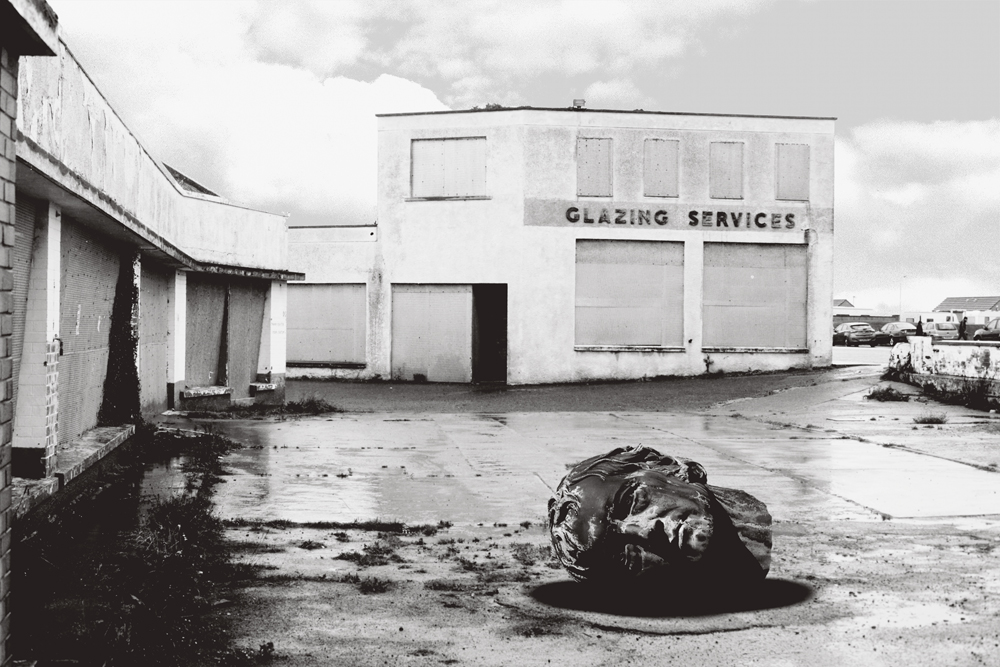
Stephen Brandes
Hegel Bollard
2016
Archival print on Canson paper, 740 x 1150 mm
Courtesy of the artist and Oonagh Young Gallery
Sitzfleisch is a long-standing fictional inhabitant of a desolate, near-future universe developed by Brandes across several works over the past five years. The name Sitzfleisch is taken from a German word, a compound noun directly translatable as ‘sitting flesh’, though its more general usage refers to an ‘ability to endure’. (It is possibly also intended to suggest an ‘arse’.) In Brandes’s work, Sitzfleisch seems a uniquely passive observer, enduring his surroundings; he is presented as a ‘failed architect and amateur historian’, attached to ‘the Council of Europe’, who send him on apparently semi-official trips around the devastated continent. He is, effectively, a sort of bureaucrat, though not a very efficient one, it seems. In the gallery, two connected video works were playing consecutively, projected onto a screen encased in a functional wooden crate on the gallery floor. Assembled as collages of mostly photographic images, with subtitles to narrate the stream of Sitzfleisch’s reflections, they describe the bureaucrat’s arrival – for reasons that remain unclear – at a cottage in the southwest of Ireland. The year is 2068 and he is laden down with bags-for-life stuffed with papers, letters, diaries, and Post-it notes.
Among these papers lies a map drawn by Arthur Geddes, son of the planning pioneer. The map shows Europe from a rather unusual vantage point, oriented somewhere above the Hebrides; like the constellation of intellectual figures assembled by Brandes, it lays out a distinctly northern European nexus. The historical span of this work is also immense, encompassing the broad historical paradigms already mentioned, but also extending them forward through a series of imagined catastrophes in the first half of the twenty-first century, which have left Europe – and Brandes’s preoccupations are very specifically European – in a state of deterioration.
In this reduced near-future world, the ‘great’ cities of Europe have degenerated into sites of alienation, violence, and unrestrained corporate plunder. In the first of the video works, Sitzfleisch Remembers (all works 2016), Geddes’s map becomes a prompt for Sitzfleisch’s recollections of his travels across the continent between the 2030s and the 2060s. These memories are each presented in two or three lines of sparse subtitles, like short prose poems, full of roving dread. In London the wealthy few gorge themselves at the Groucho Club while outside – echoing the ‘winter of discontent’ of 1978/79 – garbage strikes have left the streets filthy and noxious smelling. In Warsaw, burnt-out hotels stand in ruins, the stag-party economy having evaporated with the end of cheap airfares. In Westerplatte, xenophobic sentiment is cultivated by a surveillance state. At one point, Sitzfleisch holidays in a luxurious Tyrolean spa, taking a walk around the grounds, looking down on the ‘settlements in the foothills below’. Touring the Scottish Highlands, he encounters a wave of new age cults emigrating from all over Europe, some of them advocating a kind of crank eugenics. In Brussels, he reflects upon his failure as an architect. In Somerset – in a particularly ominous passage – he simply tells us, ‘For once it is not the fear of violence that inhibits me from leaving my car.’ The source of this fear remains nameless.
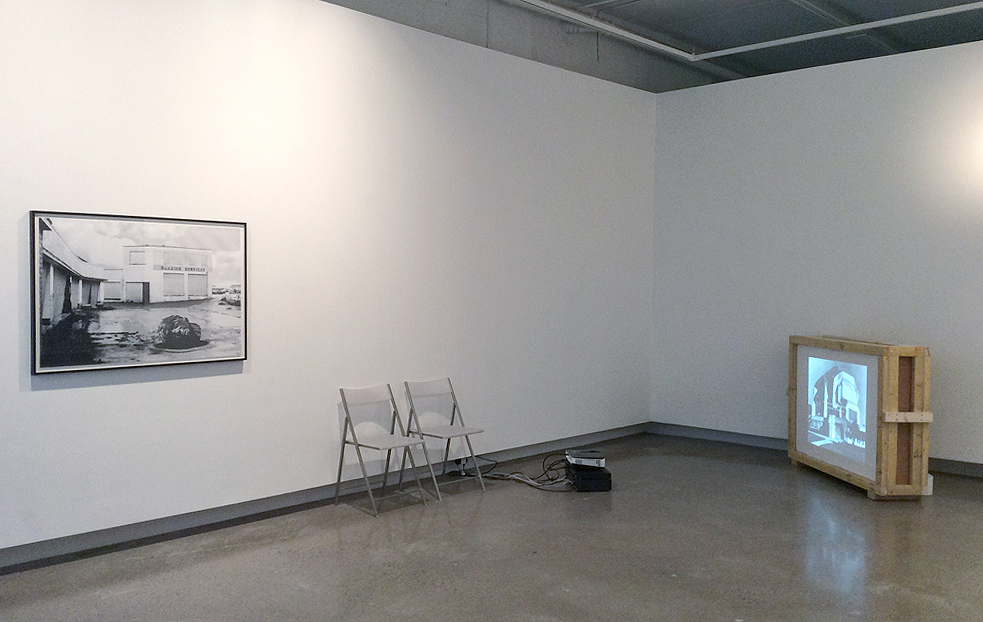
Stephen Brandes
Installation view of Parc du Souvenir
Hegel Bollard, 2016, archival print on Canson paper, 740 x 1150 mm
Sitzfleisch Recalls / Sitzfleisch Reflects (detail), 2016, video, 38 mins
Oonagh Young Gallery
Courtesy of the artist and Oonagh Young Gallery
Accompanying this sequence of laconically sinister fragments, a series of mostly photographic images are juxtaposed: images of monumental Palladian buildings, twentieth-century flat complexes, the low-grade frontages of contemporary hotel franchises. There is a kind of jaundiced bathos in some of this; take for instance the image of a food truck parked in a muddy field, its name spelt out in cheap gothic-style lettering over the hatch: ‘Geothewurst’. In the second video work, Sitzfleisch Reflects, Brandes expands upon the absurd promise of the first, bringing Geddes the planner and Grass the novelist together to share a drink in a corner of a reclamation yard. They do not speak to one another; the narrator is unsure are they ‘enraged’ or ‘resigned’; it is taken for granted that no rapprochement between the two is possible. Grass, a native of Gdansk, was arguably an observer of some of the wreckage caused by the utopian zeal of earlier reformers like Geddes. In his most significant book, The Tin Drum (1959), Grass used the device of a stunted child to provide a perspective on atrocity, painting a gnarled, occasionally blackly absurd, pitiless view of Europe’s twentieth-century history. [2]
Both video works share the same opening and closing sequences, a slightly confusing device when the two are running consecutively. In the closing sequence, the visual focus upon the monumental relics of the past is intensified: the collage sequence accelerates, images of statues – notables, for the most part, of previous ages – succeed one another, many of them broken, torn down, deteriorated, interspersed with images of derelict public spaces, nightmarish distortions of the public realm. On the gallery walls, a set of works in disparate forms – a pencil drawing, a collage, an archival print – continues this line of interrogation. One of these, Hegel Bollard, a photographic image repeated in the video work, shows a monumental head discarded on the forecourt of a glazing-services outlet. In another, Finishing School, an archival photograph of the façade of the Altes Museum in Berlin (in front of which a since-removed bronze equestrian statue of Friedrich II still stands) is spliced with a photo of a quiet pastoral scene. In a third, Pigeon (Biberkopf), a drawing of a pigeon with a huge goitre reads like a comically dismal metaphor, a grotesque joke about the prospects of Europe’s future.

Stephen Brandes
Parc du Souvenir
2016
Permanent marker & acrylic on vinyl, 2365 x 3175 mm
Oonagh Young Gallery
Courtesy of the artist and Oonagh Young Gallery
Overshadowing these smaller works is the large drawing on lino-flooring vinyl – a familiar material for Brandes – from which the exhibition takes its name. This ‘parc du souvenir’ (or ‘memorial garden’) is based upon an unrealised proposal, again by Geddes, for an ornamental park in Edinburgh dedicated to the nine muses. In Brandes’s work, Castle Hill is visible in the distance, but in an improbable flattening of perspective it is dwarfed by Geddes’s park, imagined as a continental Renaissance-style garden, symmetrically arranged over nine courtly squares, at the centre of each (instead of a Grecian muse) is an assortment of mismatched detritus, monumental and otherwise: an arrangement of tents, a pile of TV sets, a stone lion, a strange composition of what appear to be garbage bags, or, in the central panel, the Goethewurst sausage van, above which dangles the stone head of Goethe himself, severed from some statue and lodged in a steel lattice configured over this absurd vista. Between this intricately detailed park and the distant medieval town lies an ordinary suburban landscape. This kind of pastiche of civic modes is typical of Brandes’s method, scrutinising the compressed rubbish of disparate historical eras through the clear-eyed (if impossible) vantage point of a ravaged future. For Brandes, the ruined monument functions as a sort of visual short-hand for the calcification and collapse of the ideologies that have produced it. It must be said that his morbid view of the European project feels acutely prophetic in a period of shrinking mobility, tightening borders, a concentration of xenophobic and nationalistic rhetoric. There is a kind of bleak inevitability to Brandes’s work, a sense of the unstoppable trajectory of these various strands of humanist thought, that seem to terminate so gruesomely, repeatedly, in carnage.
Nathan O’Donnell is a writer based in Dublin.
Parc du Souvenir ran from 26 January to 3 March 2017.
Notes
1. In particular, Geddes was influenced by two anarchist geographers, Jacques Élisée Reclus and Peter Kropotkin, themselves building upon the legacy of Pierre-Joseph Proudhon and Mikhail Bakunin. Peter Hall, Cities of Tomorrow, Third Edition (1988; repr. Oxford: Blackwell Publishing, 2002), 143–56.
2. Grass was a pre-eminent European writer for a particular generation, though in recent years, since the long-concealed extent of his involvement with the SS has been uncovered, his reputation has appreciably diminished.


